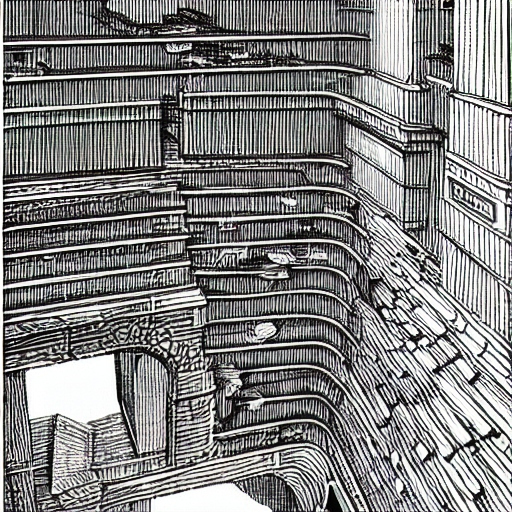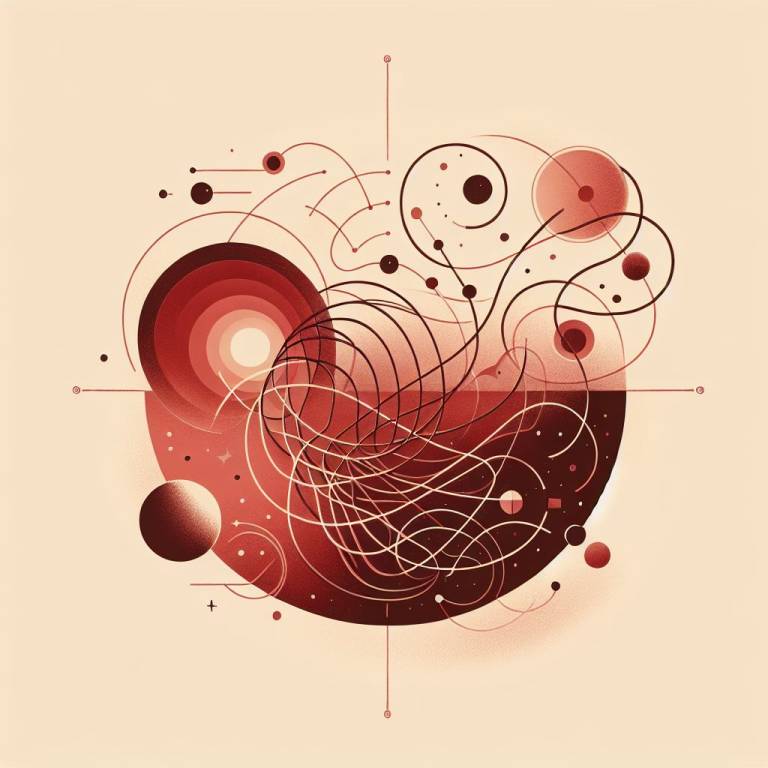Both articles provide a view to the complex and contested issue of levels of analysis in IR. The main argument of the articles is that micropolitics or everyday life not only matter but are also constitutive of the macropolitical. By refocusing their attention from the ‘macro’ to ‘micro moves’ or the everyday, the authors further argue that these approaches place people and the ways they live their everyday lives back in the centre of the discipline.
Embracing the mundane
Solomon and Steele build their argument on three examples of ‘micro moves’ in IR – the practice turn, emotions research and everyday IR. They further explain the micropolitical and connect it with the macro-level through the concepts of affects, spaces, and times. They frame their argument in contrast to IR’s systemic or grand theory defined as a theory that “has something to say on the international or global-structural level” (p. 269).
Solomon and Steele consider the ‘lower levels’ (e.g. p. 267) as ‘places’ or ‘sites’ (p. 277) where the macro-level structures are enacted and contested. Such sites comprise of, for example, the everyday lives of ordinary people and the mundane habits and emotions that are part of these lives. While the authors place focus on the micro-level, they do not discard macro-level categories (such as the state) but claim to engage with the aspects of political life that cannot be captured by macro-level analyses.
The locally experienced generates experiences that exceed individual agents.
Through the concepts of affect, space and time, Solomon and Steele are able to focus on the more unconscious aspects of agency, spaces as socially constructed sites of meaning-making, and the idea of time as the synchronization of bodily rhythms. Here the authors draw on a rich conceptual and philosophical background, including for example, the works of Gilles Deleuze, William Connolly, and Henri Lefebvre.
With the help of these concepts, the authors put forth an understanding of social life as ‘becoming’ and ‘embodiment’ in contrast to individuals, self-interest, and fixed identities. These concepts help them to argue how local experiences come together to generate collective power or experiences that exceed individual agents. Through two empirical accounts – one on the Occupy Wall Street movement and another on the Arab Spring – Solomon and Steele further make the argument that it is this micropolitical dimension of experiences and embodiment that is key in evoking broader feelings of familiarity with the political.
IR in lived spaces
Björkdahl et al. (2019) set out to describe what ‘everyday IR’ is through a discussion on the divergent views to everyday IR represented in the articles of the special issue. The authors argue that everyday IR decentralizes the field by placing it in the lived space of the everyday, thus privileging a situated understanding of IR. With an explicit focus on the everyday, they turn their analytical lens to, for example, situational knowledge of daily routines and other intimate spheres of life. While their approach resonates, to an extent with Solomon and Steele’s article, it is different from it, in particular in its refusal to endorse the assumption of levels of analysis in IR.
If there are levels in international politics, the focus on everyday dissolves and blurs them
Indeed, Björkdahl et al. emphasize that the everyday is not a particular level of analysis (p. 125) and foreground Linda Åhäll’s (2019) problematization of the micro-macro distinction (p. 124). If there are levels or scales in international politics, they are ‘dissolved and blurred’ (Björkdahl et al. 2019, p. 124). Indeed, the starting point for their special issue is that novel methodologies and concepts are needed for IR to attend to the everyday.
The key issue for Björkdahl et al., then, is to explain “where we locate meaningful micro-politics (in the form of everyday agency) and tangible connections to macro developments” ’(p. 126; emphasis added). Examples are provided through the articles in the special issue and concepts such as metis diplomacy (Visoka 2019) and circuitry (Mac Ginty 2019). The discussion leads Björkdahl et al. to end with a final argument that there is a need for “accounts of if and how the everyday is constitutive of international relations” (p. 128)?
How to understand and address levels in IR?
The articles provided a connection with past reading group topics and spurred a lively discussion about how we understand and address levels in IR, what we consider as IR scholarship, and how we write about it. We also reflected on the differences between universities and schools of thought in their views to what is unconventional.
We found the texts to include a lot of presumed dualisms. The abundance of concepts with links to different philosophical and ontological traditions in Solomon and Steele’s article in particular prompted discussion on the fit of certain concepts with the micro-macro division in the article.
We discussed that the ‘level talk’ which is present in the piece by Solomon and Steele seems contradictory to the Deleuzean understanding of assemblages (which criticizes, for example, the global-local division). We also discussed how Lefebvre’s conception of space fits with the notion of assemblages and the micro-macro division. Through the discussion on levels, we ended up pondering whether Solomon and Steele’s main argument was about the ontology of IR or about the ways we can do research about the international.
We ended up problematising the idea of ‘ordinary people’
We also discussed how to make a distinction between the everyday, ordinary, and elites. Both articles refer to the everyday as a sphere of the ordinary. We found the notion of micropolitics and everyday as the sphere of ‘ordinary people’ somewhat problematic. For example, one participant pointed out that the people in the case studies of Solomon and Steele (the Occupy Wall Street movement and Arab Spring) represent extraordinary people, exhibited by taking such action in the first place. We found Visoka’s concept of metis diplomacy particularly helpful in understanding the distinction between the three concepts. Visoka’s view on ‘the everydayness of elites’ incorporates the everyday as something that can include the daily private and working lives of elites as well as ‘ordinary people’ (Visoka 2019).
Both articles build on feminist IR scholars’ critique of the separation of the everyday from the political and global. A member of our group noted that while the authors do credit feminist IR scholars for their work on the everyday and personal, the authors seem to cite early seminal work rather than reflect on the current developments in feminist IR. This left us wondering whether a broader consideration of recent feminist work – the need for which is also recognized by Björkdahl et al. (p. 128) — could have further enriched our understanding of the everyday and enhanced possibilities to analyse “the causal or constitutive links from the everyday to macro structures and processes” (Björkdahl et al. 2019, 129).
Both articles problematise that it is easier to study how the macro-level affects the micro-level than vice versa. Here we contemplated whether this is a problem and whether our thoughts on representativeness could help to partially explain it – do we need to study the micro in the same representative way that we are accustomed to when addressing the macro?
We also considered whether the concept of assemblages could be utilised as a means to integrate the everyday or micro into systemic analyses. We further discussed how to make claims that the everyday affects the global. We considered that forging such a connection between the everyday and global may include huge causal gaps — and might not even be necessary. One participant suggested that causality could also be understood as a local phenomenon, which prompted a discussion on whether the generalisability of results could be left to be determined by the research community.
Enriching the life of IR
As is characteristic to our reading group, we ended up discussing what we consider as IR and how we write about it. One participant in our meeting raised the question “What is left of the micropolitical approach (by Solomon and Steele) if we simply remove the word IR from the text? Why do we frame it as IR?” The questions were deliberately provocative, but it directed the discussion towards ‘IR’ as the means to make the link to the international, the ways in which we write about IR as well as personal worries over how to overcome the dilemma of needing to constantly prove that one’s work belongs to IR.
We contemplated why we need to frame our research in relation to certain debates rather than simply write about the international. Here the need to maintain some sort of scholarly IR community was proposed as one possible reason for this.
Why are we led to think that a study of the everyday is somehow at the expense of the structural?
In terms of their style of argumentation, we found both articles to be framed against the ‘mainstream’. This led us to further discuss our need for ‘theoretical straw men’ and self-marginalisation. We envisioned that alternative framing strategies could be supplementary rather than contrary to the mainstream. The idea of thinking about pluralism in terms of enriching scholarship sparked interest. It seems to resonate with Björkdahl, Hall and Svensson’s suggestion that a crucial question to ask is “why do we think that a study of the everyday is at the expense of the structural” (p. 129).
For some, the view to levels in IR provided by these articles was novel and especially helpful in finding tools that can help to make sense of data that would otherwise be lost. For others, the approaches were already familiar and felt less unconventional.
We reflected on the differences between universities and schools of thought in what is considered unconventional and worth studying. We concurred that the IR discipline of Tampere University is relatively open-minded about what can be researched. It was noted that something that might be considered unconventional elsewhere could easily be a worthy subject matter within our unit.
Our embrace of the micropolitical, however, did not lead us to reject grand theories. Where Solom and Steele (2019, 285) proclaim that “[l]ife continues with or without grand theory, so let’s get about studying it”, one participant in our reading group suggested that “life does not continue without grand theory; it is oxygen!”
References
Björkdahl, A., Hall, M. and Svensson, T. (2019): Everyday international relations: Editors’ introduction. Cooperation and Conflict, 54(2) 123–130, https://doi.org/10.1177/0010836719845834
Mac Ginty, Roger (2019): Circuits, the everyday and international relations: Connecting the home to the international and transnational. Cooperation and Conflict, 54(2) 234–253, https://doi.org/ 10.1177/0010836719832343.
Åhäll, Linda (2019): Feeling Everyday IR: Embodied, affective, militarising movement as choreography of war. Cooperation and Conflict, 54(2), 14166. https://doi.org/10.1177/0010836718807501.
Solomon, T. and Steele, B. (2017): Micro-moves in International Relations theory. European Journal of International Relations, 23(2): 267–291, https://doi.org/10.1177/1354066116634442.
Visoka, Gёsim (2019): Metis diplomacy: The everyday politics of becoming a sovereign state. Cooperation and Conflict, 54(2) 167–190, https://doi.org/10.1177/0010836718807503.
The images on these pages have been generated with the help of AI tools.





